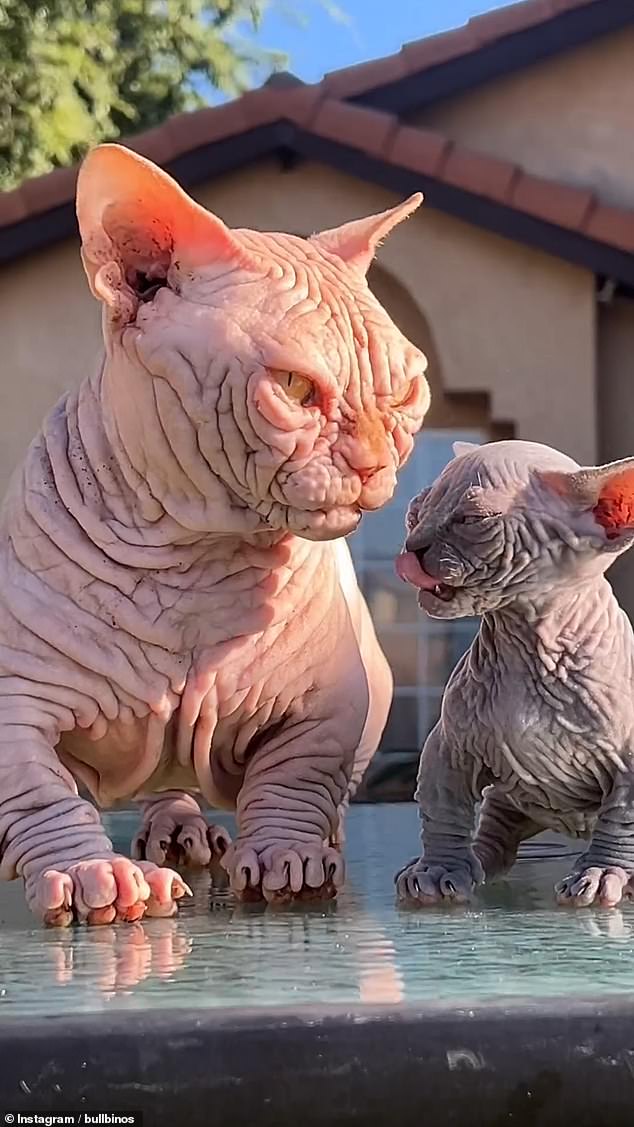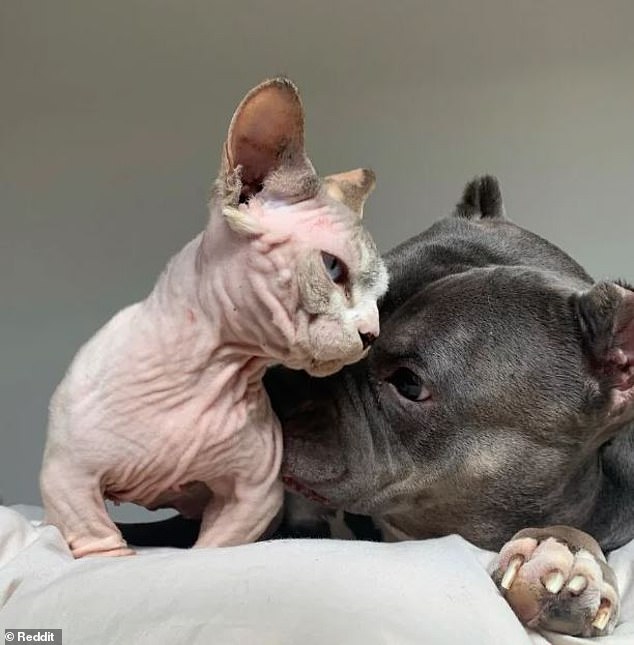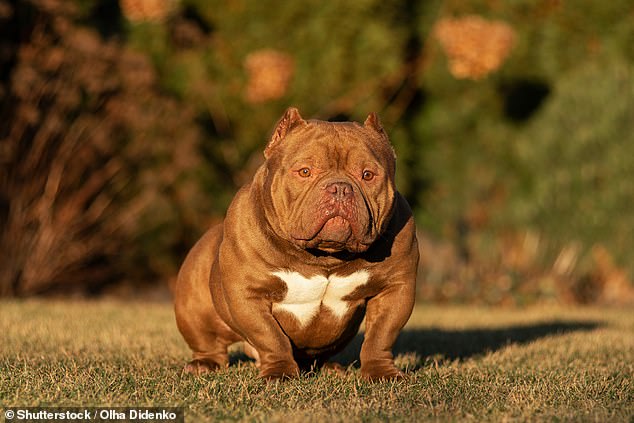Hairless ‘Bullycats’ with ‘exaggerated’ features are being bred in Britain and are gaining a ‘disturbing’ number of followers on social media.
The “unnatural” Sphynx-like breed has short, bowed legs and heavily wrinkled skin, much like that of a bully dog, experts warn of the “horrible” growing fashion for the designs despite the felines likely to suffer serious health problems.
Cat lovers are warned not to buy them and to boycott the breed as they will “endure lives ruined by suffering”.
The so-called Bullycat is believed to have originated in the US but has now crossed the Atlantic and the trend has generated a “disturbing following” on social media sites such as Facebook, TikTok and Instagram.
Animal welfare charity Naturewatch Foundation has sent a clear message to those looking to buy a cat: “If you are thinking of owning a cat, don’t be swayed by these damaging designer fads.”
Hairless “Bullycats” with “exaggerated” features are being bred in Britain and are gaining a “disturbing number of followers” on social media

The “unnatural” sphinx-like breed has short, bowed legs and badly wrinkled skin, as experts warn of a growing “horrible” designer fad.
The foundation said: “It is shocking to see these poor cats starting to appear in the UK.
‘We’ve seen increasingly extreme breeding practices in the dog world in recent years, and it seems unscrupulous people are now turning their attention to exploiting cats in the same way, all in the pursuit of greed and social media likes.
‘Bullycats are a welfare disaster that is unfolding before our eyes and this type of breeding is simply cruel.’
Dr Dan O’Neill, associate professor of companion animal epidemiology at the Royal Veterinary College (RVC), said it was “heartbreaking” to see cats now suffering the same as dogs because of humans fascinated by “extreme body shapes”.
“Bullycats are likely to suffer shorter life spans than those reported in a recent RVC VetCompass article on Sphynx cats who lived just 6.7 years compared to an average of 11.7 years for cats in general,” she said.
‘Deliberate selection for disease mutations, such as hairlessness leading to sunburn, dwarfism leading to mobility problems and joint pain, and wrinkled skin leading to lifetimes of skin infections, means that many Bullycats will endure lives blighted by suffering.
‘The advice for anyone thinking of getting a cat or dog is to always put the welfare of the animal first and to stop and think before acquiring an animal with an extreme and unnatural body shape that does not commonly exist in the wild.’

Cat lovers are warned not to buy them and to boycott the breed as they will “endure lives ruined by suffering”.

The breed called Bullycat is believed to have received its name due to its resemblance to bully dogs (pictured: an American Exotic Bully sitting on the green grass in the park)
An RSPCA spokesperson told MailOnline they were “very concerned” about the recent trend of bullycats and said it “could cause serious welfare issues for them”.
‘These exaggerated Sphynx cats are bred with very short legs, which could put stress on their joints, and they also appear to have excessive skin folds making them vulnerable to skin diseases that can cause great discomfort, the charity warned.
‘These ailments could also lead to visits to the vet, leaving owners with expensive veterinary bills as well.
‘These Sphynx-like cats are also bred to have only a fine coat of soft fur and some may not have eyelashes or whiskers.
‘This lack of fur can leave cats vulnerable to harmful UV light, cause them to struggle to keep warm and means they won’t be able to use their fur and possibly their whiskers to explore their surroundings.
‘The lack of a fur coat also means they need to be washed regularly as oil can build up on their skin.
‘There could also be other health problems associated with the fact that these cats were bred from a limited gene pool.
‘We understand that their emerging social media presence may drive a demand for these types of cats, but we urge cat lovers to consider adopting the many rescued cats in our care rather than purchasing from a breeder.
We also urge breeders to prioritize the health and well-being of any animal over its appearance.


